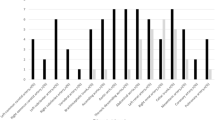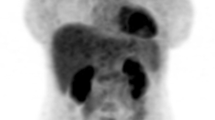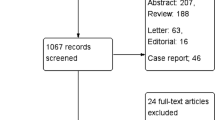Abstract
The objective of the study is to investigate the value of 18F-fluorodeoxyglucose–positron emission tomography/computed tomography (18F-FDG-PET/CT) for assessment of the activity of Takayasu’s arteritis (TA) and the correlation between acute-phase reactive proteins (ARPs) and standard uptake value (SUV). Analyses of the clinical characteristics and 42 18F-FDG-PET/CT scans in 39 TA patients were undertaken. The degree of FDG uptake in the blood vessel walls was assessed quantitatively by SUV. TA activity was analyzed by physician global assessment (PGA). Clinical and 18F-FDG-PET/CT characteristics were compared between patients with clinically active and clinically inactive TA. Maximum SUV (SUVmax), mean SUV (SUVmean), and SUV ratio (SUVratio) were significantly higher in the clinically active group than in the clinically inactive group (3.63 ± 1.96 vs. 1.82 ± 0.43, p = 0.007; 2.07 ± 0.71 vs. 1.43 ± 0.32, p = 0.009; 2.08 ± 1.17 vs. 0.95 ± 0.19, p = 0.000). Analyses of receiver operating characteristic (ROC) curves revealed a cutoff value of SUVmax of 2.21, with sensitivity and specificity of 86.2 and 90.0%, respectively, for clinically active TA. The SUVratio cutoff was 1.27 with a sensitivity and specificity of 79.3 and 100.0%, respectively. SUVratio was slightly superior to SUVmax and ARPs in the area under the curve (AUC) comparison. SUVmax and SUVratio showed a significant increasing trend with increasing US National Institutes of Health (NIH) score and levels of ARPs, interleukin-6, and serum amyloid-A protein. 18F-FDG-PET/CT is a promising non-invasive, quantitative measurement with high sensitivity and specificity for determining TA activity.




Similar content being viewed by others
References
Bicakcigil M, Aksu K, Kamali S, Ozbalkan Z, Ates A, Karadag O, Ozer HT, Seyahi E, Akar S, Onen F, Cefle A, Aydin SZ, Yilmaz N, Onat AM, Cobankara V, Tunc E, Ozturk MA, Fresko I, Karaaslan Y, Akkoc N, Yucel AE, Kiraz S, Keser G, Inanc M, Direskeneli H (2009) Takayasu’s arteritis in Turkey—clinical and angiographic features of 248 patients. Clin Exp Rheumatol 27(1 Suppl 52):S59–S64
Mason JC (2010) Takayasu arteritis—advances in diagnosis and management. Nat Rev Rheumatol 6(7):406–415. https://doi.org/10.1038/nrrheum.2010.82
Alibaz-Oner F, Aydin SZ, Direskeneli H (2013) Advances in the diagnosis, assessment and outcome of Takayasu’s arteritis. Clin Rheumatol 32(5):541–546. https://doi.org/10.1007/s10067-012-2149-3
Basu N, Watts R, Bajema I, Baslund B, Bley T, Boers M, Brogan P, Calabrese L, Cid MC, Cohen-Tervaert JW, Flores-Suarez LF, Fujimoto S, de Groot K, Guillevin L, Hatemi G, Hauser T, Jayne D, Jennette C, Kallenberg CG, Kobayashi S, Little MA, Mahr A, McLaren J, Merkel PA, Ozen S, Puechal X, Rasmussen N, Salama A, Salvarani C, Savage C, Scott DG, Segelmark M, Specks U, Sunderkoetter C, Suzuki K, Tesar V, Wiik A, Yazici H, Luqmani R (2010) EULAR points to consider in the development of classification and diagnostic criteria in systemic vasculitis. Ann Rheum Dis 69(10):1744–1750. https://doi.org/10.1136/ard.2009.119032
Yadav MK (2007) Takayasu arteritis: clinical and CT-angiography profile of 25 patients and a brief review of literature. Indian Heart J 59(6):468–474
Jiang L, Li D, Yan F, Dai X, Li Y, Ma L (2012) Evaluation of Takayasu arteritis activity by delayed contrast-enhanced magnetic resonance imaging. Int J Cardiol 155(2):262–267. https://doi.org/10.1016/j.ijcard.2010.10.002
Germano G, Monti S, Ponte C, Possemato N, Caporali R, Salvarani C, Macchioni P, Pipitone N (2017) The role of ultrasound in the diagnosis and follow-up of large-vessel vasculitis: an update. Clin Exp Rheumatol 103(1):194–198
Cavo M, Terpos E, Nanni C, Moreau P, Lentzsch S, Zweegman S, Hillengass J, Engelhardt M, Usmani SZ, Vesole DH, San-Miguel J, Kumar SK, Richardson PG, Mikhael JR, da Costa FL, Dimopoulos MA, Zingaretti C, Abildgaard N, Goldschmidt H, Orlowski RZ, Chng WJ, Einsele H, Lonial S, Barlogie B, Anderson KC, Rajkumar SV, Durie BGM, Zamagni E (2017) Role of 18F-FDG PET/CT in the diagnosis and management of multiple myeloma and other plasma cell disorders: a consensus statement by the International Myeloma Working Group. Lancet Oncol 18(4):e206–e217. https://doi.org/10.1016/S1470-2045(17)30189-4
Gallamini A, Borra A (2017) FDG-PET scan: a new paradigm for follicular lymphoma management. Mediterranean J Hematol Infect Dis 9(1):e2017029. https://doi.org/10.4084/MJHID.2017.029
Harrison DJ, Parisi MT, Shulkin BL (2017) The role of 18F-FDG-PET/CT in pediatric sarcoma. Semin Nucl Med 47(3):229–241. https://doi.org/10.1053/j.semnuclmed.2016.12.004
Ishimori T, Saga T, Mamede M, Kobayashi H, Higashi T, Nakamoto Y, Sato N, Konishi J (2002) Increased (18)F-FDG uptake in a model of inflammation: concanavalin A-mediated lymphocyte activation. J Nucl Med : Off Publ Soc Nucl Med 43(5):658–663
Kobayashi Y, Ishii K, Oda K, Nariai T, Tanaka Y, Ishiwata K, Numano F (2005) Aortic wall inflammation due to Takayasu arteritis imaged with 18F-FDG PET coregistered with enhanced CT. J Nucl Med : Off Publ Soc Nucl Med 46(6):917–922
Tezuka D, Haraguchi G, Ishihara T, Ohigashi H, Inagaki H, Suzuki J, Hirao K, Isobe M (2012) Role of FDG PET-CT in Takayasu arteritis: sensitive detection of recurrences. JACC Cardiovasc Imaging 5(4):422–429. https://doi.org/10.1016/j.jcmg.2012.01.013
Arnaud L, Haroche J, Malek Z, Archambaud F, Gambotti L, Grimon G, Kas A, Costedoat-Chalumeau N, Cacoub P, Toledano D, Cluzel P, Piette JC, Amoura Z (2009) Is (18)F-fluorodeoxyglucose positron emission tomography scanning a reliable way to assess disease activity in Takayasu arteritis? Arthritis Rheum 60(4):1193–1200. https://doi.org/10.1002/art.24416
Arend WP, Michel BA, Bloch DA, Hunder GG, Calabrese LH, Edworthy SM, Fauci AS, Leavitt RY, Lie JT, Lightfoot RW Jr et al (1990) The American College of Rheumatology 1990 criteria for the classification of Takayasu arteritis. Arthritis Rheum 33(8):1129–1134
Li D, Lin J, Yan F (2011) Detecting disease extent and activity of Takayasu arteritis using whole-body magnetic resonance angiography and vessel wall imaging as a 1-stop solution. J Comput Assist Tomogr 35(4):468–474. https://doi.org/10.1097/RCT.0b013e318222d698
Kerr GS, Hallahan CW, Giordano J, Leavitt RY, Fauci AS, Rottem M, Hoffman GS (1994) Takayasu arteritis. Ann Intern Med 120(11):919–929. https://doi.org/10.7326/0003-4819-120-11-199406010-00004
Zhou J, Li Y, Zhang Y, Liu G, Tan H, Hu Y, Xiao J, Shi H (2017) Solitary ground-glass opacity nodules of stage IA pulmonary adenocarcinoma: combination of 18F-FDG PET/CT and high-resolution computed tomography features to predict invasive adenocarcinoma. Oncotarget 8(14):23312–23321. https://doi.org/10.18632/oncotarget.15577
Andrews J, Al-Nahhas A, Pennell DJ, Hossain MS, Davies KA, Haskard DO, Mason JC (2004) Non-invasive imaging in the diagnosis and management of Takayasu’s arteritis. Ann Rheum Dis 63(8):995–1000. https://doi.org/10.1136/ard.2003.015701
de Leeuw K, Bijl M, Jager PL (2004) Additional value of positron emission tomography in diagnosis and follow-up of patients with large vessel vasculitides. Clin Exp Rheumatol 22(6 Suppl 36):S21–S26
Webb M, Chambers A, AL-N A, Mason JC, Maudlin L, Rahman L, Frank J (2004) The role of 18F-FDG PET in characterising disease activity in Takayasu arteritis. Eur J Nucl Med Mol Imaging 31(5):627–634. https://doi.org/10.1007/s00259-003-1429-1
Misra R, Danda D, Rajappa SM, Ghosh A, Gupta R, Mahendranath KM, Jeyaseelan L, Lawrence A, Bacon PA, Indian Rheumatology Vasculitis g (2013) Development and initial validation of the Indian Takayasu Clinical Activity Score (ITAS2010). Rheumatology 52(10):1795–1801. https://doi.org/10.1093/rheumatology/ket128
Hoffman GS, Ahmed AE (1998) Surrogate markers of disease activity in patients with Takayasu arteritis. A preliminary report from The International Network for the Study of the Systemic Vasculitides (INSSYS). Int J Cardiol 66(Suppl 1):S191–S194 discussion S195
Ertay T, Sencan Eren M, Karaman M, Oktay G, Durak H (2017) 18F-FDG-PET/CT in initiation and progression of inflammation and infection. Mol Imaging and Radionuclide Ther 26(2):47–52. https://doi.org/10.4274/mirt.18291
Walter MA, Melzer RA, Schindler C, Muller-Brand J, Tyndall A, Nitzsche EU (2005) The value of [18F]FDG-PET in the diagnosis of large-vessel vasculitis and the assessment of activity and extent of disease. Eur J Nucl Med Mol Imaging 32(6):674–681. https://doi.org/10.1007/s00259-004-1757-9
Henes JC, Muller M, Krieger J, Balletshofer B, Pfannenberg AC, Kanz L, Kotter I (2008) [18F] FDG-PET/CT as a new and sensitive imaging method for the diagnosis of large vessel vasculitis. Clin Exp Rheumatol 26(3 Suppl 49):S47–S52
Lee SG, Ryu JS, Kim HO, JS O, Kim YG, Lee CK, Yoo B (2009) Evaluation of disease activity using F-18 FDG PET-CT in patients with Takayasu arteritis. Clin Nucl Med 34(11):749–752. https://doi.org/10.1097/RLU.0b013e3181b7db09
Lee KH, Cho A, Choi YJ, Lee SW, Ha YJ, Jung SJ, Park MC, Lee JD, Lee SK, Park YB (2012) The role of (18) F-fluorodeoxyglucose-positron emission tomography in the assessment of disease activity in patients with takayasu arteritis. Arthritis Rheum 64(3):866–875. https://doi.org/10.1002/art.33413
Karapolat I, Kalfa M, Keser G, Yalcin M, Inal V, Kumanlioglu K, Pirildar T, Aksu K (2013) Comparison of F18-FDG PET/CT findings with current clinical disease status in patients with Takayasu’s arteritis. Clin Exp Rheumatol 31(1 Suppl 75):S15–S21
Santhosh S, Mittal BR, Gayana S, Bhattacharya A, Sharma A, Jain S (2014) F-18 FDG PET/CT in the evaluation of Takayasu arteritis: an experience from the tropics. J Nucl Cardiol : Off Publ Am Soc Nucl Cardiol 21(5):993–1000. https://doi.org/10.1007/s12350-014-9910-8
Sun Y, Ma L, Yan F, Liu H, Ding Y, Hou J, Jiang L (2012) MMP-9 and IL-6 are potential biomarkers for disease activity in Takayasu’s arteritis. Int J Cardiol 156(2):236–238. https://doi.org/10.1016/j.ijcard.2012.01.035
Kong X, Sun Y, Ma L, Chen H, Wei L, Wu W, Ji Z, Ma L, Zhang Z, Zhang Z, Zhao Z, Hou J, Dai S, Yang C, Jiang L (2016) The critical role of IL-6 in the pathogenesis of Takayasu arteritis. Clin Exp Rheumatol 34(3 Suppl 97):S21–S27
Funding
This work was supported by the National Natural Science Foundation of China (81571571).
Author information
Authors and Affiliations
Corresponding author
Ethics declarations
The study protocol was approved by the ethics committee of Fudan University (Shanghai, China). All patients provided written informed consent to participate in the study.
Disclosures
None.
Electronic supplementary material
Rights and permissions
About this article
Cite this article
Zhang, X., Zhou, J., Sun, Y. et al. 18F-FDG-PET/CT: an accurate method to assess the activity of Takayasu’s arteritis. Clin Rheumatol 37, 1927–1935 (2018). https://doi.org/10.1007/s10067-017-3960-7
Received:
Revised:
Accepted:
Published:
Issue Date:
DOI: https://doi.org/10.1007/s10067-017-3960-7




